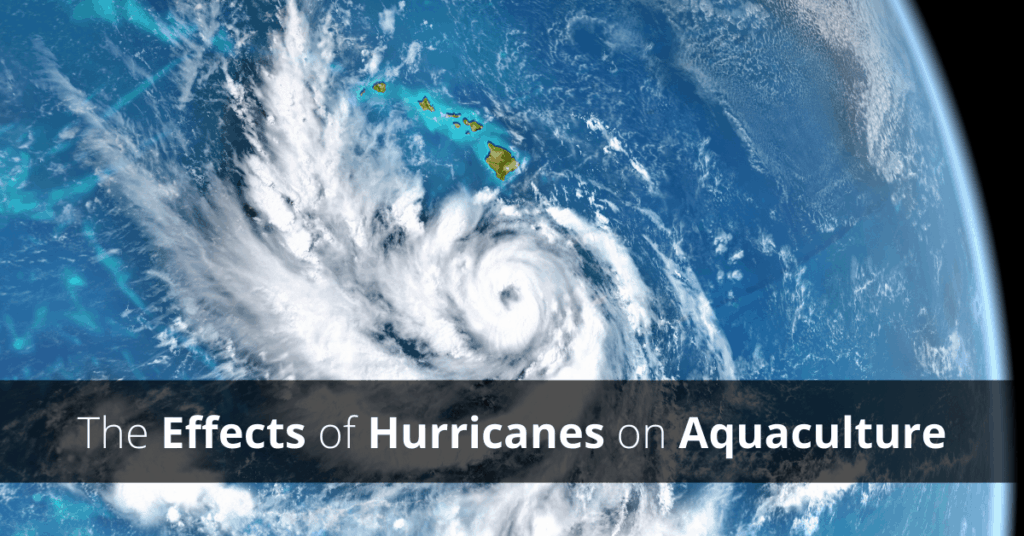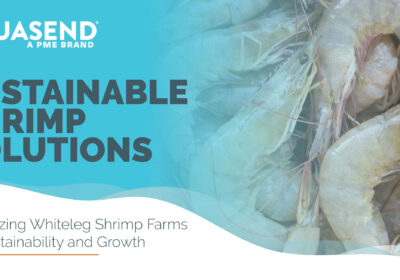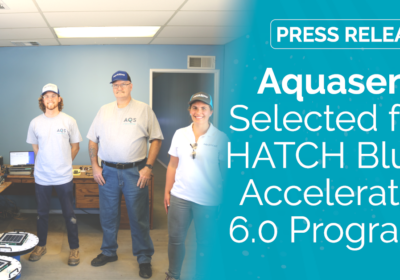The Effects of Hurricanes on Aquaculture

In light of Hurricane Laura’s recent devastation on the Louisiana coast, people are worried about how their businesses, homes, and livelihoods will be affected. Coastal communities in Louisiana rushed early harvests because Hurricane Laura was predicted to have a storm surge up to 15 feet high but was recorded as only reaching about 9 feet in height. The most catastrophic part of the storm was the 150-mile an hour wind. While the wind was tearing roofs off houses and knocking down trees, the flooding experienced by coastal towns was less severe than expected.
Hurricane Laura’s Known Impacts
Severe flooding of Louisiana crawfish farms could force crawfish to prematurely leave their burrows, making them susceptible to hot, stagnant waters and become easy targets for predators. To reduce this risk, farmers are advised to drain their ponds of floodwaters as soon as it is safe for them to do so. Storm flooding can wash predatory fish into aqua farm ponds and can be extremely harmful to the farm’s harvest. As long as Hurricane Laura doesn’t cause prolonged flooding, it’s expected that crawfish farmers should be able to recover from the storm.
The damage to the shrimping industry is not yet fully determined, but the main concern is for the boats. Shrimpers secured their boats as best they could before the storm hit but the 150-mile an hour winds likely caused damage to the fleets. The extent of the damage is unconfirmed, but at least some shrimping communities seem to have escaped the worst of the storm.
Impacts of Past (and Possibly Future) Hurricanes on Aquaculture
Storm surges, eddies, and increased litterfall from hurricanes can increase mortality rates for aquatic species. The oxygen needed for decomposition of the litterfall (fallen branches and other organic matter) can cause periods of hypoxia (low oxygen levels) in the surrounding waters. Hypoxia results in localized mortality spikes among aquatic life and is the biggest cause of fish deaths after a hurricane.
Storm surges lead to coastal flooding which can have several negative impacts on aquaculture and marine life. Coastal farms can flood, like the crawfish farms mentioned previously, fish can be displaced by the surge and end up stranded on land or in aqua farm ponds, and freshwater fish may be forced further upstream due to the increased salinity caused by the surge. With large storm surges, fish and other aquatic species may not have the time or ability to swim upstream which results in mass deaths due to increased salinity and decreased oxygen.
Many aqua farms are located in coastal areas which are often the hardest hit by hurricanes. Extensive loss of power, property damage, water contamination, displaced fish, and fish deaths are all serious threats to aqua farmers and their harvest levels. Fixed aquatic species, such as oysters, are subject to the battering of powerful waves which cause breakage and extreme salinity changes. Oyster farms often suffer great damages after a hurricane has run its course, but some are lucky enough to be fully flooded from the storm surge which helps dispel the effects of battering waves.
Other Negative Aquatic Impacts of Hurricanes
Besides aqua farms, hurricanes damage wild aquatic species as well. Coral reefs and sea turtle nests are two of the most vulnerable places during hurricanes. Sea turtle nests, buried in the sand on beaches, are exposed by storm surges and powerful waves that displace the sand. This leads to broken eggs and exposure to predators.
Beaches that are home to many sea turtle nests will likely see up to 100% mortality rates of the eggs, depending on the strength of the hurricane and intensity of the storm surge. Coral reefs are subject to the same battering waves as fixed aquatic species. Reef structures that are delicate and branching will likely get completely destroyed, while reefs with solid, rock-like foundations are better able to withstand the hurricane’s destruction.
Hurricanes are catastrophic natural disasters that cause widespread damage, especially in coastal areas, and even deaths. If you live in an area that is susceptible to hurricanes, educate yourself on emergency procedures to ensure your preparedness for the next time a hurricane might ravage your town. While Hurricane Laura caused damage to the aquaculture industry, the damage to people’s homes and businesses is far more devastating. You can join Aquasend in donating to help aid victims of Hurricane Laura with debris removal, roof tarping, food and water supplies, and more.


